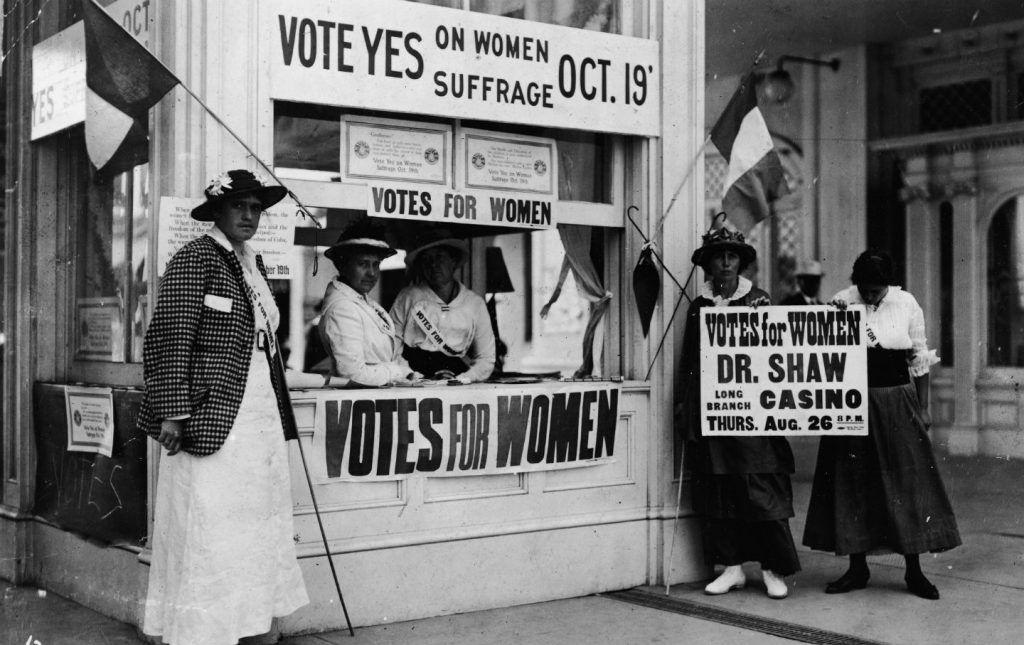Sydney Lee CMC ’22
Staff Writer
March 5, 2020
This year marks the 100th Anniversary of the passage of the 19th Amendment, which was ratified on August 18, 1920. The 19th Amendment formally declares that “the right of citizens of the United States to vote shall not be denied or abridged by the United States or by any State on the account of sex,” and its ratification was the culmination of a movement that started in the mid 19th Century.
In 1869, Susan B. Anthony and Elizabeth Cady Stanton founded the National Woman Suffrage Association with the intent to push for national legislation that would give women the right to vote. Eventually, the NWSA joined forces with Lucy Stone’s organization, the American Woman Suffrage Association, to form the National American Woman Suffrage Association in 1890. Under Carrie Chapman Catt’s leadership at the beginning of the 20th Century, the NAWSA successfully aided in women’s enfranchisement in 15 states by the end of World War I. In the progression of women’s rights, World War I was considered a tipping point because of the active involvement of women in war efforts (History.com). President Woodrow Wilson attempted to pass an amendment for women’s suffrage in 1918 following the end of World War I, but it lost in the Senate. It was not until 1920 that Tennessee tipped the scales in favor of ratification and gave the 19th Amendment the ⅔ majority vote.
Even though the names Susan B. Anthony, Elizabeth Cady Stanton, Lucy Stone and Carrie Chapman Catt are names typically associated with the women’s suffrage movement, another group of female activists was fighting for equality. Mary Church Terrell, Sojourner Truth, Jovita Idar, Ida B. Wells and Wilhelmina Kekelaokalaninui Widemann Dowsett were some of the many activist leaders of color during the women’s suffrage movement. During the fight for women’s suffrage, racial discrimination divided activists and the events following the ratification of the 19th Amendment reflected this divide. The obstacles that men of color faced following the passage 15th Amendment, which allowed citizens the right to vote regardless of “race, color or previous condition of servitude,” lingered at the start of the Women’s Suffrage Movement and the prejudices and racism persisted through the passage of the 19th Amendment. The Voting Rights Act of 1965 formally allowed black women to exercise their 19th Amendment right without any restrictions but Latinx, Asian and Native American women were still denied their unrestricted right to vote until the passage of the voting rights amendments in 1975 (Teenvogue.com).
Ever since the passage of the voting rights amendments in 1975, women have continued to exceed the number of men who have voted in every presidential election, and the disparity between the two groups has grown with every election. Another trend to emerge after the ratification of the 19th Amendment is the gender voting gap. The gender voting gap refers to the disparity between the proportions of women and men who support a certain candidate in an election and there are gender gaps in presidential and congressional elections. In the 2016 presidential election, 52 percent of Donald Trump’s voters were men and 48 percent were women. In the 2014 and 2010 congressional midterm elections, more women voted for Democratic candidates than men, and more men voted for Republican candidates than women (Cawp.rutgers.edu). Even though the explanation for the differences between the party preferences is multi-faceted, one explanation for the phenomenon is that democratic policies are aligned with women’s priorities. An example is the democratic policies that seek to expand social welfare. Since women are statistically more likely to live below the poverty threshold, they are more likely to support the democratic policy for expanded welfare (Theatlantic.com).
As America celebrates the 19th Amendment, it is important to acknowledge the conditions that initially accompanied the legislation and the reality of the women’s suffrage movement.
Image Credit: The Nation



